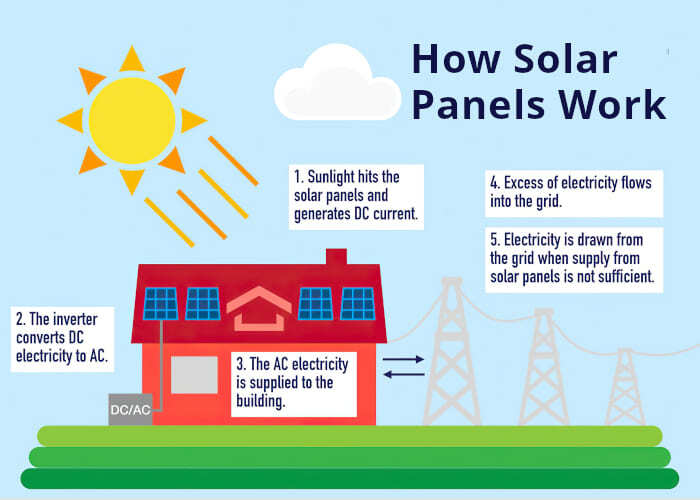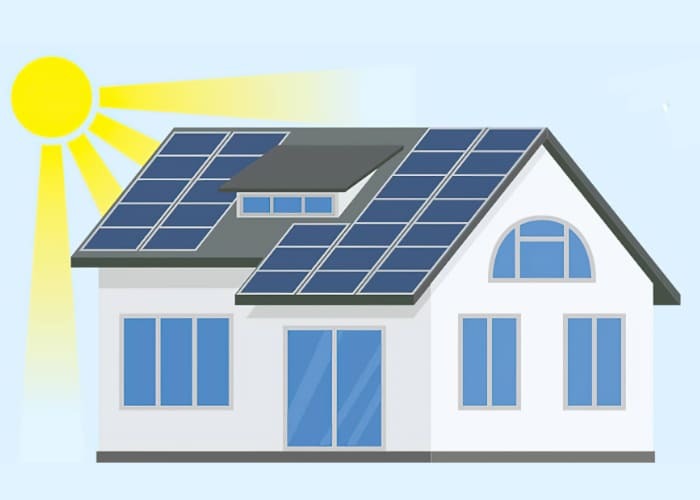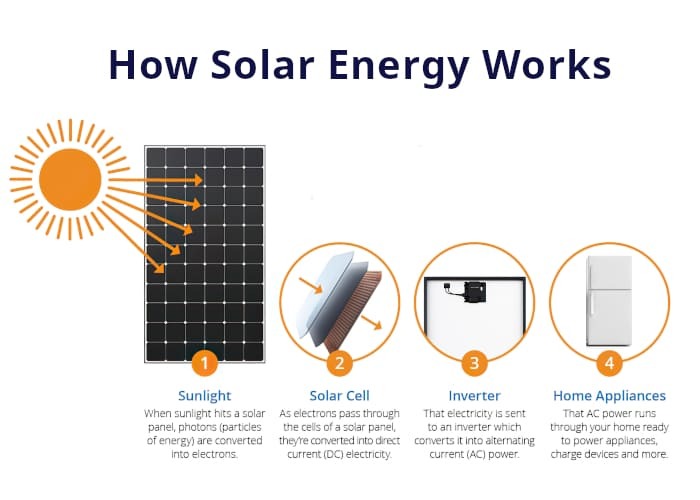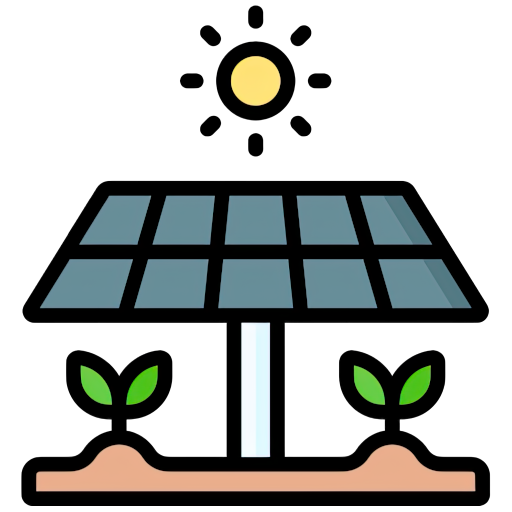How Solar Energy Works

How Solar Energy Systems Work
Generating Power On The Roof
How solar worksTo simplify matters, let’s start by explaining a pure silicon solar cell. Silicon features four electrons in the outer electron shell of the atomic nucleus, the so-called valence electrons. The photons, i.e. the sunlight, bombard the solar cells and enrich the valence electrons with energy. The electrons are finally knocked off the silicon atom and leave a positive atom behind. For the free electrons to move in the right direction and to allow current to be generated, the front surface and the back surface of the cell needs to be polarized differently. So the silicon atoms at the front surface are doped with a minor quantity of phosphorus atoms featuring an extra valence electron. On the back surface of the cell, however, boron atoms with only three valence electrons are added to the silicon atoms.

This establishes a voltage difference between the positive and negative pole and allows electrons to flow, that’s how current is generated. A large number of these solar cells put together and encapsulated with glass will then form one of your solar modules.
DC Power generated in the solar modules can be used in the household or fed into the utility transmission grid, provided it is first converted into AC. This is the core task of the inverter. The inverter represents a highly complex link between the solar modules and the utility transmission grid. It is therefore expected to fulfill a series of highly demanding tasks. The inverter converts DC, generated in the solar modules, into AC. Synchronized with the supply voltage, this AC is then either fed into the circuit of your home or into the utility transmission grid.
Most grid tied inverters operate in a fully automated manner. After sunrise, as soon as there is sufficient output generated by solar modules, the control unit starts monitoring the utility line voltage and frequency as well as the energy offer. Once enough sunlight is received, the solar inverter starts feeding the utility transmission grid. Depending on the type of installation, a few watts of solar power will be enough do the job!

What Are Applications Of Solar Electric Systems?
Solar electric systems are being installed around the world – even in less than sunny areas such as Germany and Japan – to provide energy to homes, schools, small businesses, and office buildings – even skyscrapers! Some electric utilities are installing large PV arrays to generate electricity. Believe it or not solar electricity is even being widely used in less developed countries to power lights and televisions in remote villages, as well as to power refrigerators and freezers to store medications. Also, virtually all military and telecommunications satellites are powered by solar electricity, as well as the International Space Station!
Pros Of Using Solar Electricity
It’s clean, it’s free, it’s abundant, and solar electricity helps us decrease our reliance on fossil fuels.
Contact us today to set up an appointment with one of our Solar Advisors: 281-916-4244 or
[email protected]










